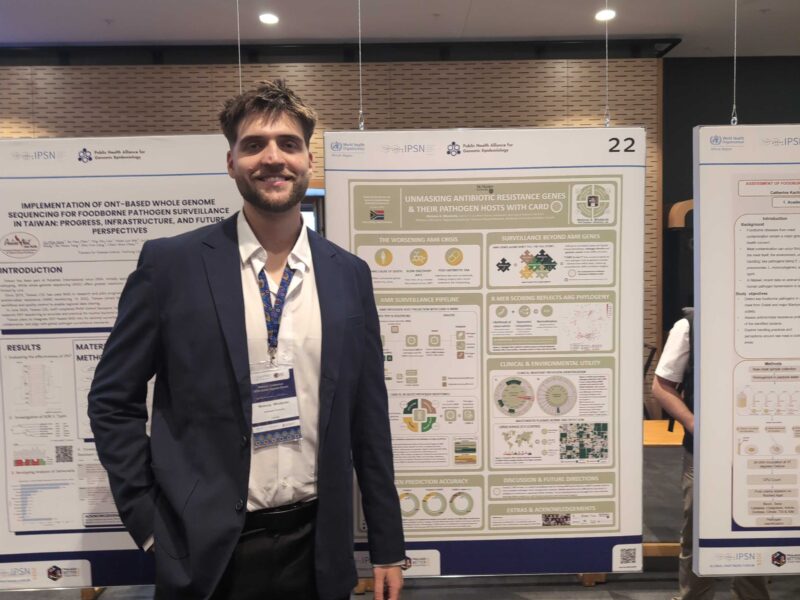 Tsang, K.K. & A.G. McArthur. 2017. Encoding the efflux pump phenomena. Oral presentation at the Second American Society for Microbiology Meeting on Rapid Applied Microbial Next-Generation Sequencing and Bioinformatics Pipelines, Washington, D.C.
Tsang, K.K. & A.G. McArthur. 2017. Encoding the efflux pump phenomena. Oral presentation at the Second American Society for Microbiology Meeting on Rapid Applied Microbial Next-Generation Sequencing and Bioinformatics Pipelines, Washington, D.C.
Background: Efflux pumps are a major mechanism for intrinsic and acquired resistance to our current antibiotic armamentarium. Efflux mechanisms interplay synergistically with other resistance mechanisms, including drug permeability, degradation and inactivation, to strengthen pathogen antimicrobial resistance levels. Despite their clinical relevance, there is no resource that seeks to understand and predict the contribution of efflux pumps in antimicrobial resistance from genome sequence. This has resulted in limited prediction of the full potential of all resistance determinants in a bacterial cell.
Methods: The Comprehensive Antibiotic Resistance Database (CARD, https://card.mcmaster.ca/) and Resistance Gene Identifier (RGI) were optimized for E. coli and P. aeruginosa efflux pump detection through extensive curation and algorithmic development. Literature was mined and analyzed to curate all published information on E. coli and P. aeruginosa efflux pumps into CARD. Algorithmic development of RGI involved creating bioinformatics detection models and refining their parameters. The Efflux Pump Identifier (EPI) was developed to predict efflux pumps and antimicrobial resistance based on RGI results generated using CARD and tested using genome sequences of characterized, clinical multi-drug resistant E. coli and P. aeruginosa isolates.
Results: The Efflux Pump Identifier (EPI) analyzed 124 E. coli and 94 P. aeruginosa clinical multi-drug resistant samples to predict efflux pumps and their complex regulatory networks under three paradigms: 1) Perfect, 2) Partial, and 3) Putative. The Perfect paradigm identifies perfect matches to known efflux pumps curated into CARD. The Partial algorithm detects efflux pumps where at least one or more components of the efflux pump is not a perfect match to an efflux pump component in CARD, but likely a functional homolog. Lastly, the Putative algorithm discovers potential efflux pumps where all components are not perfect matches to previously curated components in CARD.
Conclusions: The development of the Efflux Pump Identifier (EPI) devotes effort to an area in antimicrobial resistance where insufficient attention has been paid in the past. This is a step towards answering the long-standing question in the efflux pump phenomena; is the detected efflux pump genotype being expressed to present a specific phenotype? Using the Efflux Pump Identifier (EPI) in tandem with the existing repertoire of detection tools for dedicated and mutational resistance determinants leads to the complete prediction of antibiogram from genome sequence.


